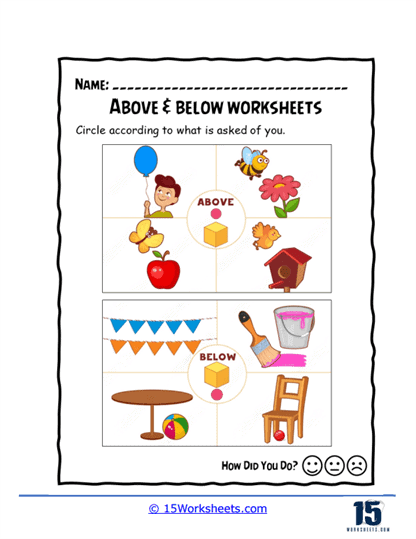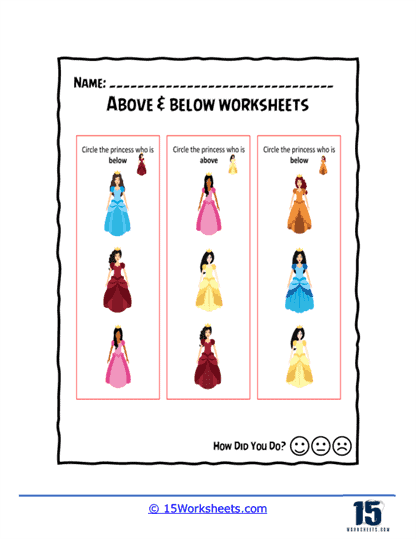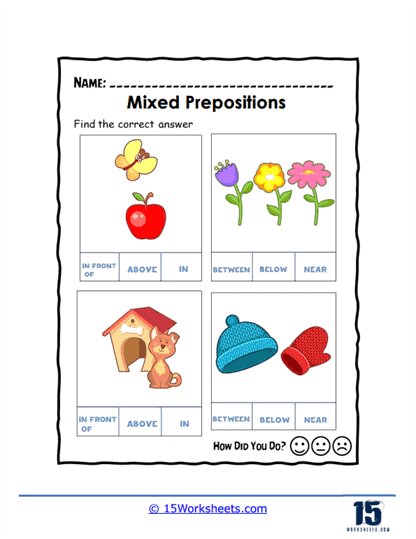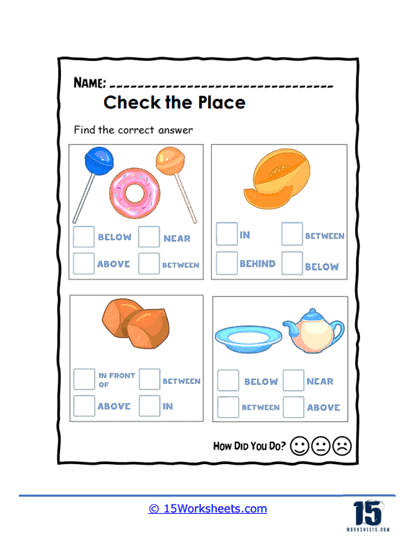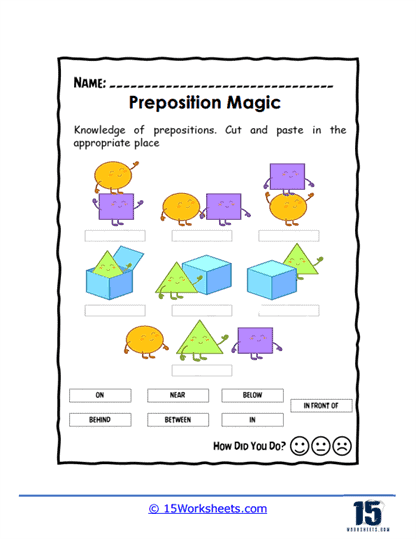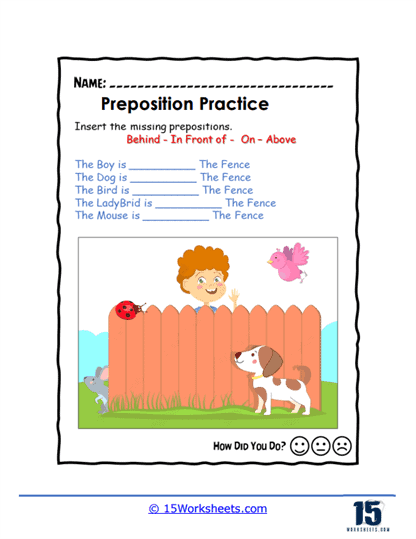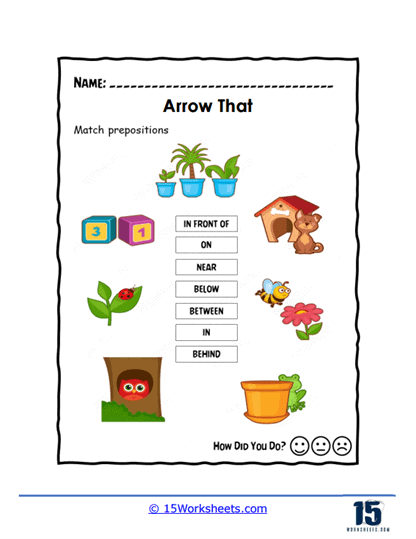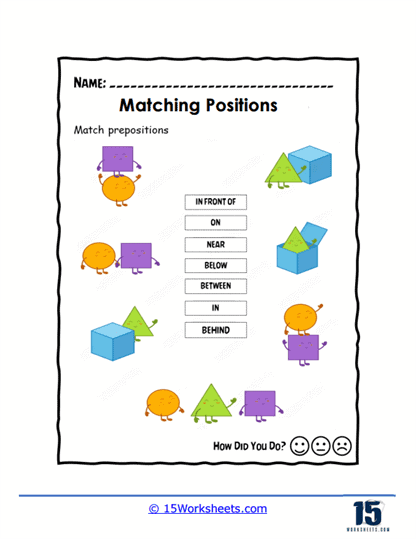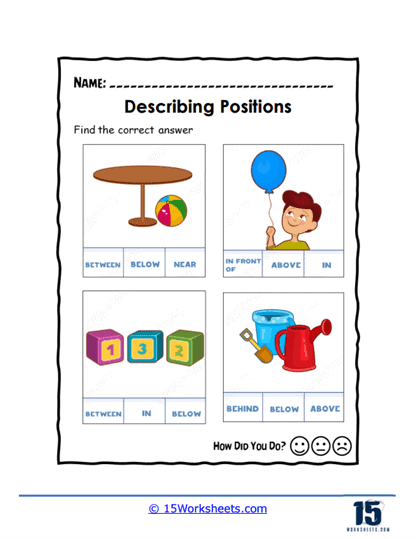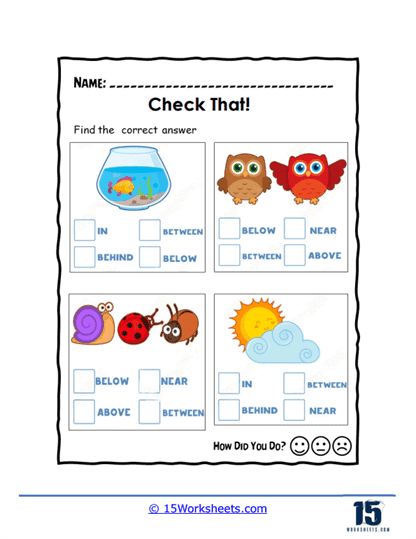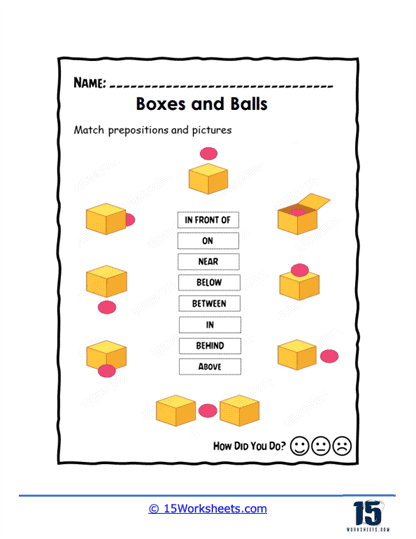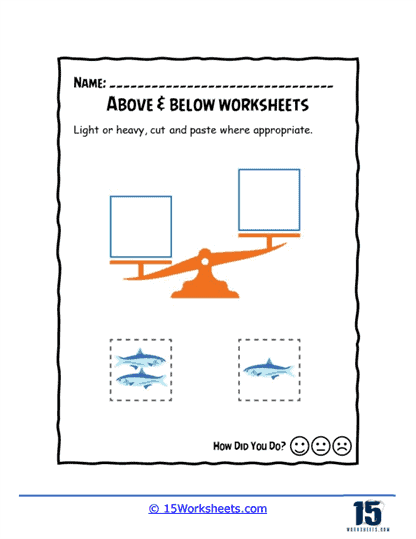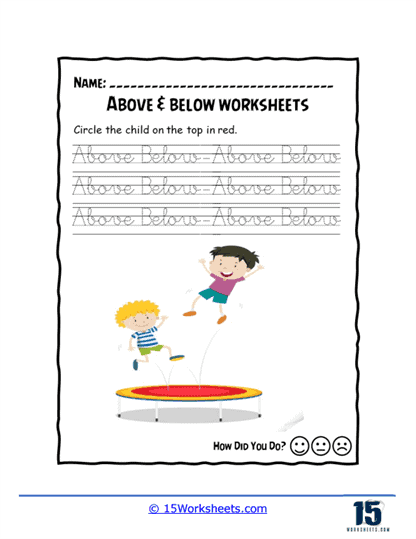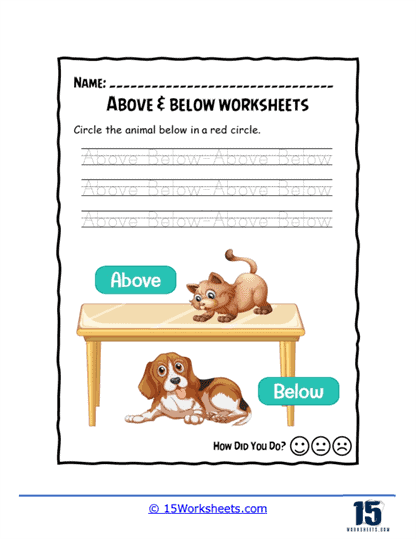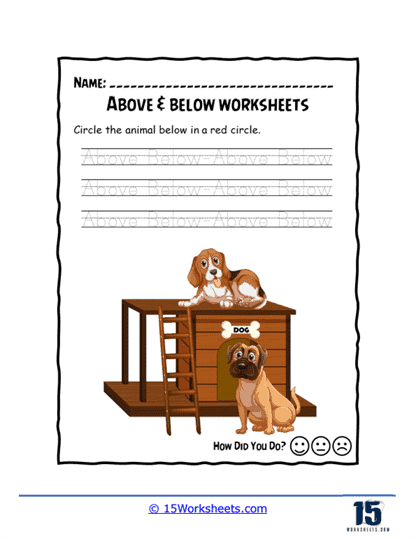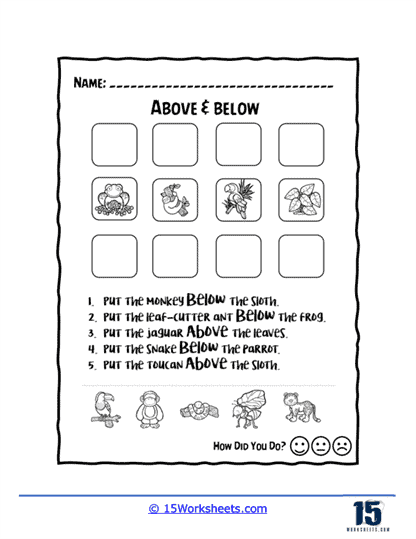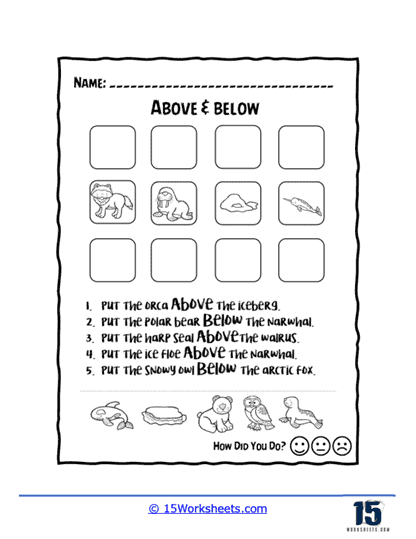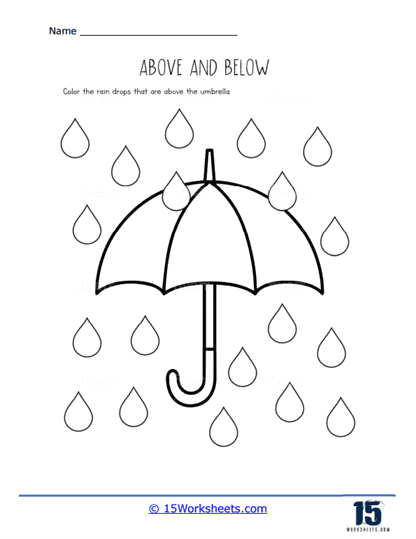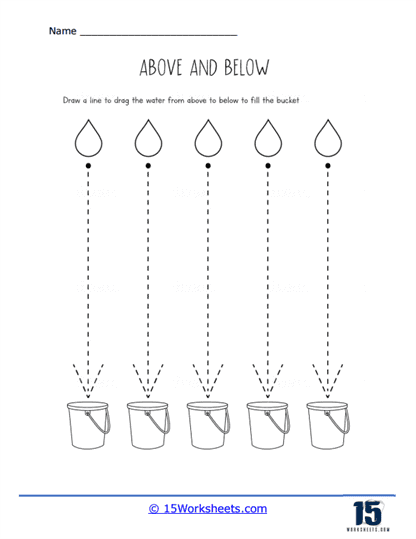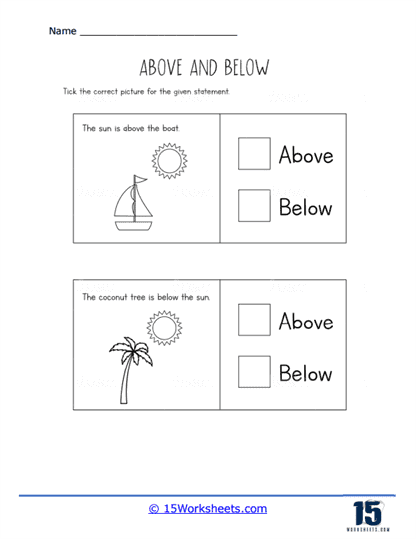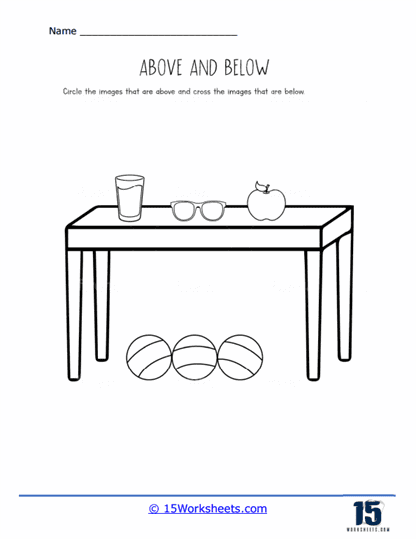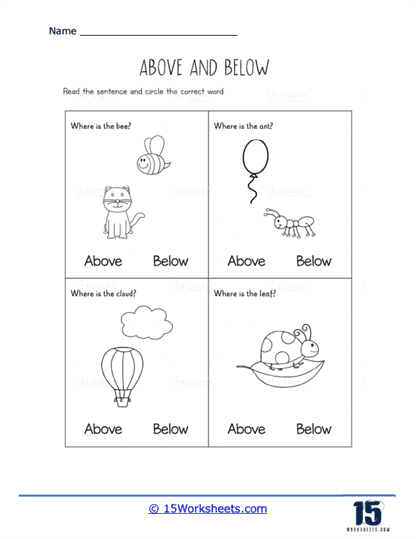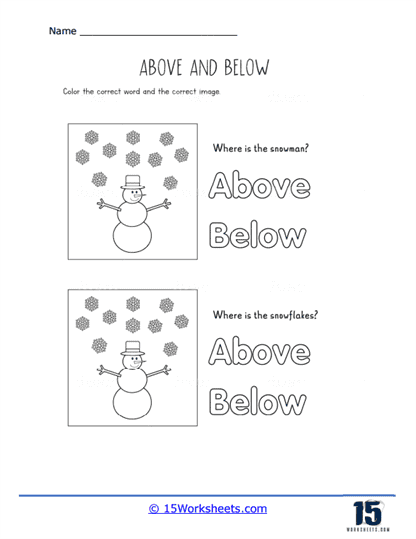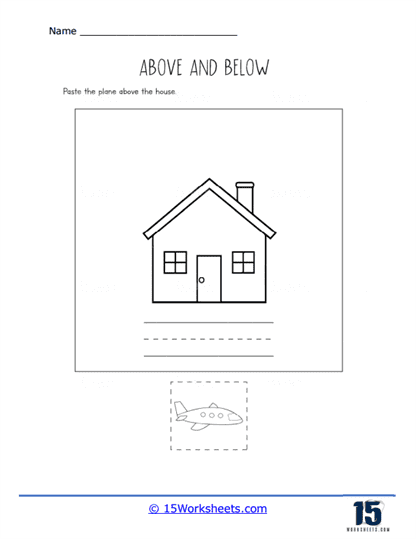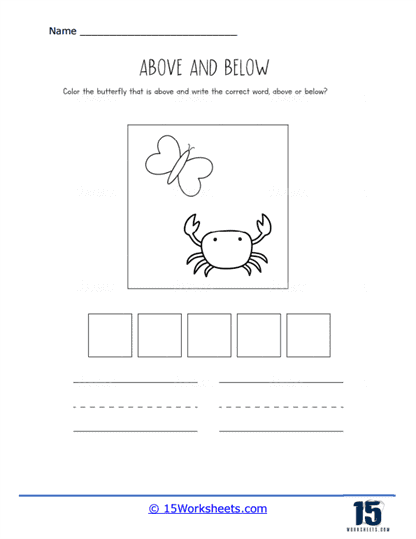Above or Below Worksheets
About These 15 Worksheets
By using the worksheets, you’ll become a pro at understanding where things are in relation to one another. It’s like getting a superpower that lets you accurately describe the world around you. Whether you’re directing a play, describing where you hid the last piece of cake in the fridge, or solving a complex problem in class, these “Above or Below” worksheets will give you the training you need to make sense of your surroundings.
What is Difference Between Above or Below?
“Above” and “below” are prepositions that we use in English to describe the relative position of things. They’re kind of like directions on a map, but for objects in our everyday lives. If you’ve ever played the game “Hot and Cold” where someone hides an object and tells you if you’re getting “hotter” (closer) or “colder” (farther away), “above” and “below” work in a similar way. But instead of telling you how close you are to something, they tell you where something is located in relation to something else.
Above – This term is used to indicate something at a higher level or layer than something else. For instance, if you say “the light bulb is above the table”, it means that the light bulb is at a higher position than the table. In other words, if you were to draw a line from your eye level to the object, the line would move upwards to reach the object described as being “above”.
To understand these concepts clearly, let’s imagine a fun scenario. Picture a tree in your backyard or local park. The birds chirping on the branches are “above” the ground. This means they’re higher up, or at a level that’s on top of the ground. When you climb up the tree to join them, you’ll also be “above” the ground. If you reach the very top of the tree, you are “above” all the other branches too. “Above” often gives you the feeling of being in the air, or higher than something else, like a superhero flying above the city.
Below – This term is used to indicate something at a lower level or layer than something else. For example, if you say “the shoes are below the table”, it means that the shoes are at a lower position than the table. If you were to draw a line from your eye level to the object, the line would move downwards to reach the object described as being “below”.
Now let’s talk about “below”. If you’re standing under the tree looking up at the birds, you are “below” them. This means you’re at a level that’s lower or underneath them. If there’s a little hole at the base of the tree where a rabbit lives, the rabbit’s home is “below” the ground surface. If you dig in the ground to plant a seed, you put the seed “below” the surface of the ground. “Below” usually means that you’re under something, or at a lower level, like a miner digging deep below the earth’s surface.
In essence, “above” and “below” are opposites. When you’re referring to the position of one object relative to another, if it’s not above, then it’s likely below, and vice versa.
Tips for Teaching Kids the Difference Between Above or Below
Use Everyday Objects – Use everyday items in your home or classroom to demonstrate the difference between above and below. You could use a toy or a book and show it being placed above and below a table, chair, etc.
Real-life Scenarios – Incorporate these terms into your daily life and conversations with the child. For example, if you’re in a park, point out that the birds are above in the sky and the grass is below your feet.
Draw Pictures – Children often understand concepts better through visual aids. Draw a picture of a tree and a bird, and explain that the bird is above the tree and the tree is below the bird.
Interactive Games – Create games that require understanding of the words above and below. For example, you could hide a toy and give them clues such as “The toy is above the couch” or “The toy is below the table”.
Storytelling – Read stories or create your own where the use of ‘above’ and ‘below’ is prominent. You can use children’s books or online resources to find suitable stories.
Worksheets – Worksheets with images can help children understand these prepositions better. There are many free resources online where you can download such worksheets.
Sing Songs or Rhymes – There are many children’s songs or rhymes that incorporate spatial concepts like above and below. These can make learning fun and memorable.
Role Play – Engage in role-playing games where kids have to follow instructions involving ‘above’ and ‘below’. For instance, you could tell them to put a hat above their head, or to place a toy below a chair.
Incorporate Technology – Use child-friendly apps or online games which teach spatial concepts. There are several educational apps designed specifically for teaching prepositions.

